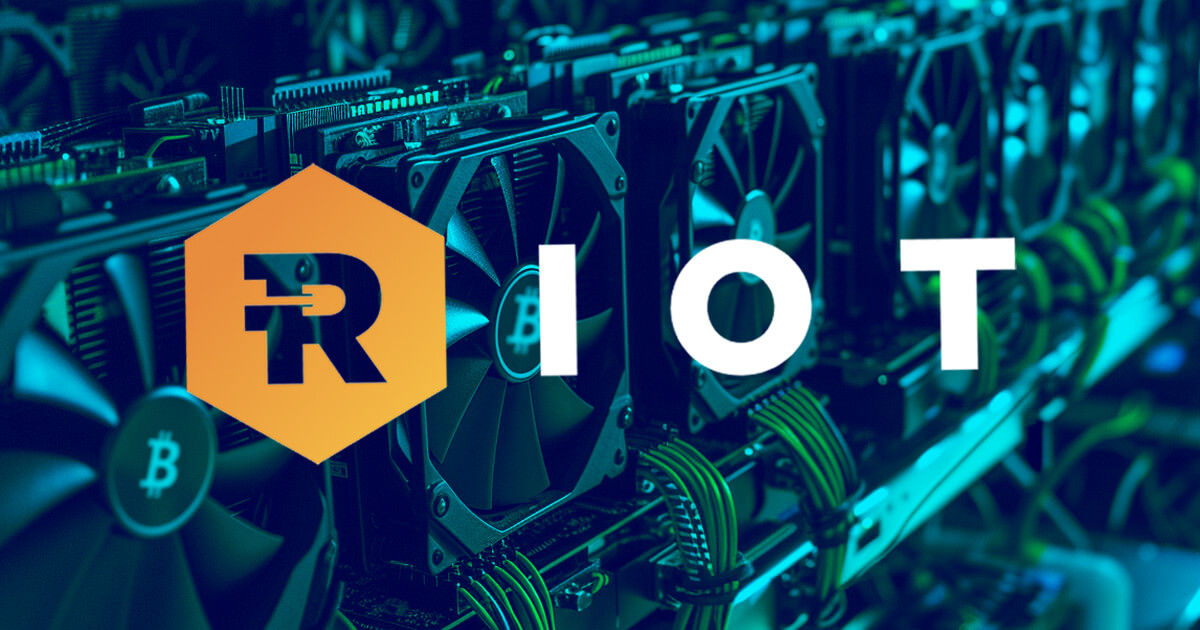Blog

Ethereum Surpasses Bitcoin in August Trading Volume
Sep-5-2025
Ethereum led with $480B in August spot trading volume
Bitcoin followed with $401B, reversing earlier trends
Shift signals changing trader interest in the crypto market
In a surprising shift this August, Ethereum ($ETH) surpassed Bitcoin ($BTC) in spot trading volume. According to recent data, Ethereum’s volume reached a massive $480 billion, while Bitcoin trailed behind at $401 billion. This marks a notable change in market dynamics, as Bitcoin has historically maintained dominance in spot trading activity.
Spot trading volume is a strong indicator of investor interest and liquidity in the market. Ethereum overtaking Bitcoin suggests that more traders are actively buying and selling ETH than BTC, at least during this period.
What’s Driving Ethereum’s Surge?
Several factors may explain Ethereum’s surge in trading activity. First, growing excitement around Ethereum-based layer-2 networks, DeFi protocols, and NFTs continues to fuel activity on the network. Additionally, recent developments and upgrades to the Ethereum blockchain, such as improvements in scalability and gas fee optimization, may be boosting confidence among traders.
There’s also rising anticipation for further Ethereum ecosystem upgrades, which may attract institutional attention and spark additional trading volume. Meanwhile, Bitcoin’s relatively stable performance may have led to lower short-term trading interest compared to ETH.
Changing Market Sentiment
Ethereum leading in trading volume could signal a broader shift in trader sentiment. While Bitcoin remains the original and most well-known cryptocurrency, Ethereum’s flexibility, smart contracts, and active development make it a favorite among builders and developers.
This August’s numbers don’t necessarily mean Bitcoin is falling behind permanently, but they highlight the growing significance of Ethereum in the broader crypto market. As trading patterns evolve, investors will be watching closely to see if Ethereum can maintain its momentum in the coming months.
Read more

Riot Platforms Hits August Bitcoin Production Record
Sep-4-2025
Riot Platforms sets record with 477 BTC mined.
Jason Les highlights efficient power strategy.
Riot’s holdings reach 19,309, boosting market position.
Riot Platforms set a new record in August 2025, producing 477 bitcoin and increasing total holdings to 19,309 BTC. This marks a 48% increase from August 2024, achieved with a power cost of 2.6c/kWh.
Jason Les, CEO of Riot Platforms, announced that the company produced 477 bitcoin in August 2025, achieving an all-time high and increasing its holdings to 19,309 BTC.
Riot’s production increase showcases improved mining efficiency, boosting their market standing. This sets a positive precedent for growth and strategy adaptation in crypto markets.
Riot Platforms achieved a milestone in August 2025, setting a new all-time high with the production of 477 BTC. Increasing their holdings to 19,309 BTC, the firm underscores its technological capabilities and strategic power use.
Strategic Power Usage
Jason Les, CEO of Riot Platforms, credited their unique power strategy for the record-breaking production. As he stated, “Riot produced 477 bitcoin in the month of August. This production is an all-time high for Riot in the month of August and represents a 48% increase relative to August 2024. We were able to achieve strong production results while still realizing a low all-in cost of power of 2.6c/kWh for the month, which is a strong demonstration of the benefits of Riot’s unique power strategy and the capabilities of our power management team.” Selling 450 BTC in the month contributed to revenue of $51.8 million, highlighting strong operational performance.
Riot’s expanded hash rate and efficient operations led to production gains. The event strengthened their competitive edge in the crypto mining industry. Key market players are observing Riot's strategic advancements closely.
Operational Efficiency and Costs
The increased production by Riot demonstrates its adeptness in managing operational costs, evidenced by its low power cost of 2.6c/kWh. Financial results indicate robust execution but no new institutional investments reported.
Riot's all-time high in August 2025 showcases the company’s successful expansion and operational efficiency. These achievements set benchmarks in the crypto industry, underscoring Riot’s capability to scale amidst evolving market dynamics.
Impact on Future Industry Movements
Strategies employed by Riot could influence future industry movements. As operational strategies adapt, outcomes could shape technological advancements and dictate future market performance. Investors and analysts should monitor for evolving trends and strategic shifts.
Read more

BitMine Acquires 1.87 Million ETH Worth Over $8.1 Billion
Sep-3-2025
BitMine now holds 1.87M ETH worth $8.1B.
The largest institutional Ethereum holder globally.
Backed by major institutional investors.
BitMine Immersion Technologies (BMNR) has emerged as the world's largest institutional Ethereum holder, now possessing 1.87 million ETH valued at over $8.1 billion.
BitMine's massive Ethereum acquisition signals significant institutional interest, potentially impacting ETH's market dynamics and liquidity. The move positions BitMine for strategic influence within the Ethereum ecosystem.
BitMine Immersion Technologies has amassed over 1.87 million Ethereum (ETH) tokens, totaling more than $8.1 billion, establishing itself as the largest institutional holder of the cryptocurrency. This strategic move positions BitMine as a key player in the Ethereum market. BitMine becomes the largest corporate Ethereum holder
Tom Lee, Chairman of BitMine, alongside prominent investors such as ARK and Founders Fund, indicates a significant institutional interest in Ethereum. Their strategy aims for BitMine to accumulate up to 5% of Ethereum’s total supply. Our initiative is supported by premier institutional investors.
The extensive acquisition by BitMine could lead to increased market pressures on Ethereum supply and is likely to influence its liquidity. The move also underscores the growing institutional confidence in cryptocurrencies as alternative investment assets. In-depth research and insights into cryptocurrency market trends
In the financial realm, these substantial Ethereum holdings may bolster BitMine’s position in the crypto economy, paving the way for further technological innovations and potential market adjustments.
Industry observers note that this acquisition might stimulate similar strategies by other companies, potentially reshaping the cryptocurrency landscape. Ethereum’s evolving role within decentralized finance infrastructures could see increased integration and utility. Real-time updates on cryptocurrency news and developments
Potential outcomes include enhanced market liquidity and reinforced institutional interest in Ethereum. As BitMine progresses towards holding a significant fraction of Ethereum, it may enable deeper influence in governance and staking protocols, shaping future crypto regulations.
Read more

Australia’s Superannuation Turns Into a $2.8T Test Case for Crypto Adoption
Sep-2-2025
Global exchanges target Australia’s $2.8T pension pool as a gateway for crypto entry.
SMSFs drive adoption, with crypto exposure jumping sevenfold to A$1.7B since 2021.
Deloitte projects superannuation could reach $11.2T by 2043 reshaping global finance.
Australia’s superannuation system is fast becoming a critical testing ground for the integration of crypto into regulated retirement savings. Global exchanges Coinbase and OKX are eyeing the A$4.3T ($2.8T) pension pool with new offerings designed to route retirement capital into digital assets.
Superannuation represents Australia’s mandatory retirement savings framework, which is one of the world’s largest investment pools. By September 2024, assets under management totaled $2.7 trillion, more than double the $1.2 trillion recorded a decade earlier.
Superannuation Growth Turns into a Global Crypto Test Case
At an annual growth rate of 8.2%, the system has overtaken the total capitalization of all firms listed on the Australian Stock Exchange. Future growth projections underline its influence. Deloitte projects the fund would reach $11.2 trillion by 2043 in nominal terms, which equals about $7 trillion in today’s dollars.
The scale highlights why global exchanges see superannuation as a potential model for embedding crypto into conservative retirement structures. If successful, the move could reshape institutional attitudes toward digital assets far beyond Australia’s borders.
Cath Bowtell, chair of IFM Investors, explained that $3.2 billion flows into the system each week. This constant inflow requires continuous identification of viable opportunities
Funds already extend across global infrastructure, with investments in toll roads in the United States and ports in Canada. However, liquidity pressures and global market exposure mean diversification remains a pressing concern for fund managers.
Deutsche Bank strategist Lachlan Dynan cautioned against the dangers tied to large-scale foreign exchange hedging. He cautioned that it could expose funds to sudden cash calls during times of crisis. Yet the pandemic revealed superannuation’s resilience when Australians withdrew $38 billion early without destabilizing the broader market.
SMSFs Drive Crypto Growth as Superannuation Shows Resilience
Self-managed superannuation funds (SMSFs) have become the leading participants in adopting crypto. SMSFs allow individuals to manage their own retirement investments and currently account for about one-quarter of the overall system.
Exposure to digital assets within SMSFs has grown sevenfold since 2021, now totaling A$1.7 billion. The increase reflects a rising appetite for diversification among investors who want more direct control over their portfolios.
Coinbase and OKX are positioning themselves to capture this trend. The platform is developing a specialized SMSF platform and already has more than 500 investors on its waiting list. John O’Loghlen, Asia-Pacific managing director, noted that 80% of applicants want to create new SMSFs, and 77% expect to commit up to A$100,000 in crypto.
Related: Coinbase Adds WLFI’s USD1 Stablecoin to Its Listing Roadmap
OKX launched its SMSF product in June and has reported more engagement than anticipated. Kate Cooper, CEO of the cryptocurrency platform OKX Australia, confirmed that the exchange is connecting investors together with accountants and legal advisors to make fund creation easier.
Although there’s no minimum requirement for SMSFs, the high cost means these structures make sense only for larger portfolios and could be effectively seen as buy-and-hold mechanisms for long-term crypto exposure.
Currently, AMP is the only significant pension provider to come out making a statement on crypto exposure, but momentum in SMSFs may see a wider sector engagement. Australia could be a world leader if mainstream super funds embrace digital assets. This would reflect the potential for pension capital to challenge crypto as a long-term savings investment.
Whether this is a sustainable model or a speculative experiment, the system can be seen as a framework for incorporating digital assets in conservative portfolios. Others, however, believe it could harm the financial stability of those against the idea.
Read more

Metaplanet Boosts Bitcoin Holdings to 20,000 BTC
Sep-1-2025
Metaplanet acquires 1,009 BTC, reaches 20,000 BTC holdings.
Positioned among top global Bitcoin corporate holders.
Plans for $1.2B raise for further Bitcoin purchases.
Metaplanet Inc., led by CEO Simon Gerovich, announced on Monday the purchase of 1,009 Bitcoin, increasing its holdings to an impressive 20,000 BTC.
The firm's aggressive strategy seeks to secure 1% of Bitcoin's supply by 2027, placing Metaplanet among top corporate holders, highlighting institutional interest in cryptocurrency investments.
Metaplanet's Strategic Move
Metaplanet's latest acquisition of 1,009 BTC brings its total to an impressive 20,000 BTC. The move highlights the firm's ambition to cement its position as a leading Bitcoin-focused entity.
CEO Simon Gerovich is spearheading Metaplanet’s transformation by focusing on comprehensive Bitcoin endeavors. The company has announced a plan to raise $1.2 billion through share issuance to fund future BTC acquisitions.
This strategic move positions the company among the top corporate Bitcoin holders globally." - Simon Gerovich, CEO, Metaplanet, as mentioned in Crypto Briefing.
Economic and Market Impacts
The decision to expand Bitcoin holdings has affected market dynamics, bolstering Metaplanet's reputation. The firm's stock reacted accordingly, reflecting confidence in its future prospects.
Financial implications include allocating $835 million for additional Bitcoin purchases, indicating a proactive stance on corporate crypto investment. Politically, this may stimulate discussions on corporate Bitcoin strategies.
Historical Context and Future Outlook
The acquisition strategy mirrors historic cases like MicroStrategy’s Bitcoin investment approach, hinting at possible market volatility. Nonetheless, Metaplanet’s approach ensures it remains resilient against financial fluctuations.
Potential outcomes include increased institutional interest in Bitcoin and potential regulatory scrutiny. Historical trends show corporate crypto adoption can influence broader market behaviors, reinforcing Metaplanet's strategic foresight.
Read more






